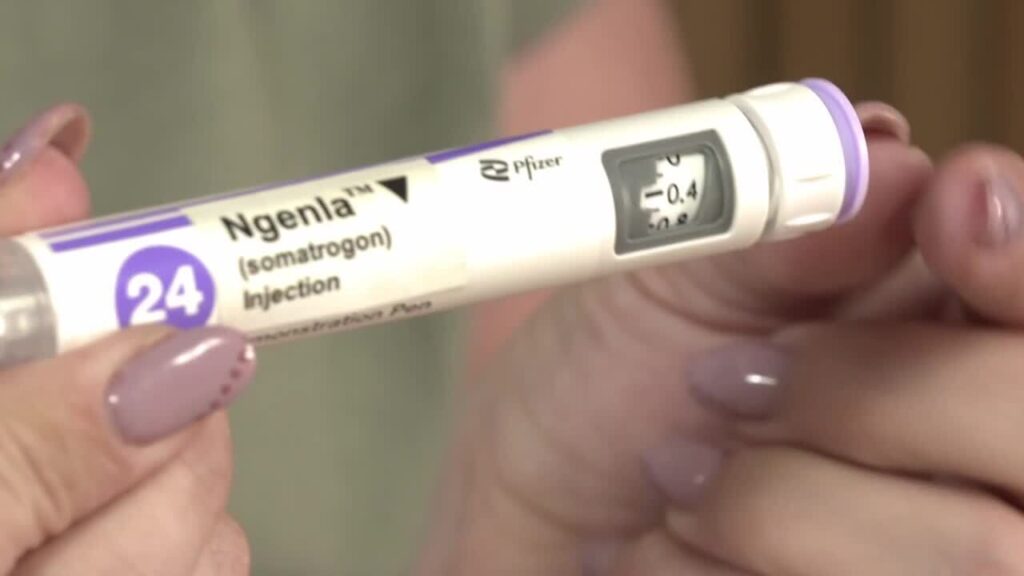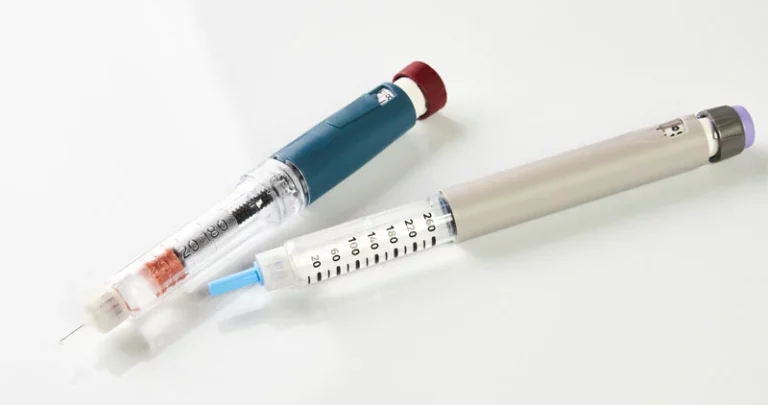- 1. Understanding Growth Hormone Deficiency (GHD)
- 2. Overview of Somatropin
- 3. Introduction to Somatrogon
- 4. Ngenla: Ready-to-Use Somatrogon Pen Solution
- 5. Comparing Somatrogon and Somatropin
- 6. Patient Experience and Real-World Impact
- 7. Clinical Evidence Supporting Somatrogon and Somatropin
- 8. Future Outlook for Growth Hormone Therapies
- Conclusion
Growth hormone deficiency (GHD) is a medical condition caused by insufficient production of growth hormone (GH), leading to various developmental and metabolic complications in both children and adults. Recombinant human growth hormone (rhGH) therapies have been developed to treat this condition effectively. Among the treatments available, somatrogon and shttps://hghsources.com/store/hgh/somatropin-canada-75iu-hgh-usa/omatropin are two prominent options that have distinct characteristics. This article examines the differences between somatrogon and somatropin, focusing on their structure, mechanisms of action, dosing regimens, efficacy, safety, and patient experiences.
Additionally, this article will discuss Ngenla, a somatrogon-based product, and its advantages in terms of convenience and efficacy in treating growth hormone deficiency.
1. Understanding Growth Hormone Deficiency (GHD)
Growth hormone deficiency can affect both children and adults. In children, GHD causes delayed growth and shorter stature, while in adults, it can lead to metabolic issues such as increased fat mass, decreased muscle mass, and impaired quality of life. Recombinant human growth hormone (rhGH) therapies have revolutionized the treatment of GHD, providing a solution to replace the missing hormone and restore normal growth and physiological function.
2. Overview of Somatropin
Somatropin is the traditional form of rhGH, identical to the natural human growth hormone produced by the pituitary gland. It is widely used to treat GHD by promoting growth, regulating metabolism, and improving overall health.
a. Structure and Mechanism of Action
Somatropin is a 191-amino acid recombinant protein identical to endogenous human growth hormone (hGH). It binds to GH receptors, initiating a cascade of biological events that include the stimulation of insulin-like growth factor 1 (IGF-1) production. IGF-1 plays a crucial role in promoting cellular growth, protein synthesis, and regulating metabolic functions like fat metabolism.
b. Dosing and Administration
Somatropin typically requires daily injections due to its short half-life. Patients must inject the hormone subcutaneously every day to maintain sufficient levels in the body. This frequent dosing can be a burden, particularly for children and caregivers, affecting patient adherence to treatment.
c. Efficacy and Safety
Somatropin has been extensively studied and proven effective for treating GHD in both children and adults. While effective, it comes with potential side effects such as injection site reactions, headaches, and fluid retention. In rare cases, somatropin may cause serious side effects like glucose intolerance, increased intracranial pressure, and antibody formation against GH.
3. Introduction to Somatrogon
Somatrogon is a newer, long-acting growth hormone analog that addresses the challenges of daily injections with somatropin. It is a recombinant human growth hormone (rhGH) fused with a portion of human chorionic gonadotropin (hCG), which extends its half-life, allowing for once-weekly dosing instead of daily administration.
a. Structure and Mechanism of Action
Somatrogon consists of the same 191-amino acid sequence as somatropin, but it is linked to a C-terminal peptide from hCG. This structural modification extends its half-life, enabling longer-lasting action. Like somatropin, somatrogon binds to GH receptors and stimulates IGF-1 production, resulting in similar growth-promoting and metabolic effects, but with less frequent dosing.
b. Dosing and Administration
Somatrogon’s extended half-life allows for once-weekly injections, which provides a significant advantage in terms of convenience and patient compliance. The reduced injection frequency can be particularly beneficial for pediatric patients and their caregivers, as it reduces the burden of daily injections.
c. Efficacy and Safety
Somatrogon has demonstrated comparable efficacy to somatropin in clinical trials. Both therapies effectively promote growth in children with GHD and improve metabolic health in adults. Common side effects of somatrogon are similar to those of somatropin, including injection site reactions, headaches, and fluid retention. The safety profile of somatrogon is consistent with somatropin, making it a reliable alternative for patients requiring long-term growth hormone therapy.
4. Ngenla: Ready-to-Use Somatrogon Pen Solution
One of the most significant advances in somatrogon therapy is Ngenla, a ready-to-use pen containing somatrogon solution for injection. It is designed for ease of use, offering both convenience and efficiency in growth hormone replacement therapy.
a. Ngenla 24 mg/1.2 mL Pen
Ngenla is a somatrogon-based product available in a ready-to-use pen format containing 24 mg/1.2 mL of somatrogon solution for injection. This pre-filled pen offers a simplified injection process, reducing preparation time and the potential for dosing errors.

b. Benefits of Ngenla
- Convenience: Ngenla’s pre-filled pen requires no mixing or preparation, making the injection process faster and easier for both patients and caregivers.
- Once-Weekly Dosing: Like somatrogon, Ngenla allows for once-weekly injections, reducing the frequency of injections compared to daily somatropin therapy. This can improve adherence, especially for pediatric patients.
- Ease of Use: The pen is designed for self-administration, which empowers patients to manage their treatment more independently.
Ngenla is particularly suited for patients seeking a convenient and less intrusive growth hormone therapy without compromising efficacy.
5. Comparing Somatrogon and Somatropin
While both somatrogon and somatropin are effective in treating GHD, they differ in several critical aspects, including structure, dosing frequency, and the overall patient experience.
a. Structure and Duration of Action
- Somatropin: Structurally identical to natural hGH, somatropin has a short half-life and requires daily injections.
- Somatrogon: A modified version of hGH fused with hCG, somatrogon has an extended half-life, allowing for weekly injections.
b. Dosing Frequency
- Somatropin requires daily injections, which can be a challenge for patients, especially children.
- Somatrogon, with products like Ngenla, only requires once-weekly injections, providing a more patient-friendly option.
c. Patient Adherence and Quality of Life
Daily injections can be a burden, particularly for pediatric patients and their caregivers. Somatrogon’s weekly dosing, especially in the form of the Ngenla pen, can improve patient adherence and reduce treatment fatigue, leading to better long-term outcomes.
d. Efficacy in Promoting Growth
Both somatrogon and somatropin are highly effective in promoting growth in children with GHD. Clinical studies have shown that somatrogon is non-inferior to somatropin, meaning that patients can expect similar growth outcomes with either therapy.
e. Safety Profiles
Both somatropin and somatrogon have similar safety profiles, with common side effects including injection site reactions, headaches, and fluid retention. Serious adverse events are rare for both treatments, making them both safe and effective options for growth hormone therapy.
6. Patient Experience and Real-World Impact
The patient experience plays a critical role in the success of long-term treatments like growth hormone therapy. The convenience of a once-weekly dosing regimen with somatrogon, especially when administered via the Ngenla ready-to-use pen, can significantly improve patient satisfaction and adherence.
a. Pediatric Patients
Children with GHD often require years of treatment to reach their full growth potential. The burden of daily injections with somatropin can lead to treatment fatigue, making somatrogon’s once-weekly dosing an attractive alternative. The use of a pen device like Ngenla further simplifies the injection process, reducing the stress and anxiety associated with daily injections.
b. Caregiver Burden
Caregivers play a vital role in ensuring that pediatric patients adhere to their growth hormone therapy regimen. The simplified administration and once-weekly dosing of Ngenla ease the burden on caregivers, allowing for a more flexible and less stressful routine.
c. Adult Patients
For adults with GHD, maintaining a regular injection schedule can be challenging due to work, travel, or other commitments. Ngenla’s once-weekly dosing provides a more convenient option, potentially leading to better adherence and improved quality of life for adult patients.
7. Clinical Evidence Supporting Somatrogon and Somatropin
Clinical trials have demonstrated that both somatrogon and somatropin are effective in treating GHD. In a pivotal phase 3 clinical trial, somatrogon was found to be as effective as somatropin in promoting growth over a 12-month period. The safety profiles of both treatments were also similar, with no significant differences in adverse events.
a. Somatrogon Clinical Trials
In children with GHD, somatrogon has been shown to promote linear growth as effectively as daily somatropin. The added convenience of weekly dosing resulted in higher patient satisfaction and better adherence.
b. Somatropin Clinical Trials
Somatropin has a long history of use in both pediatric and adult populations. It has consistently demonstrated effectiveness in promoting growth and improving metabolic health in patients with GHD.
8. Future Outlook for Growth Hormone Therapies
The development of long-acting growth hormone therapies like somatrogon represents a significant step forward in the treatment of GHD. The ability to reduce the frequency of injections without compromising efficacy has the potential to improve patient adherence, satisfaction, and overall treatment outcomes.
a. Innovations in Growth Hormone Delivery
In addition to somatrogon, other long-acting growth hormone therapies are currently under development. These therapies aim to further reduce the burden of treatment by offering less frequent dosing schedules, such as biweekly or monthly injections. Continued innovation in this field holds promise for improving the quality of life for patients with GHD.
b. Personalized Medicine
As personalized medicine evolves, there may be opportunities to tailor growth hormone therapy based on individual patient profiles, allowing for more precise dosing regimens and optimized outcomes.
Conclusion
Both somatrogon and somatropin offer effective treatments for growth hormone deficiency, with somatropin requiring daily dosing and somatrogon offering the convenience of once-weekly injections. Products like the Ngenla ready-to-use pen (24 mg/1.2 mL) further enhance the patient experience by simplifying the administration process and improving adherence. The choice between somatrogon and somatropin should be guided by patient needs, preferences, and healthcare provider recommendations. Both therapies represent significant advances in the management of growth hormone deficiency and offer patients the opportunity to achieve improved growth and metabolic outcomes.




